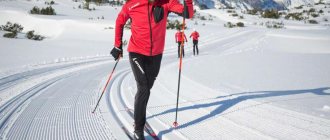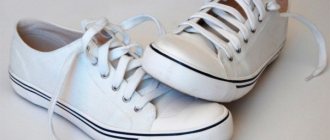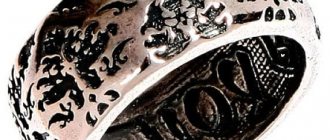Whatever the level of the skier - from an amateur exploring ski tracks in suburban forests to a super-professional participant in the Olympic Games, absolutely everyone is concerned about the same question: how to improve the glide of their skis?
This material is certainly not for professionals, since most often they have special teams of servicemen, and not rarely, they themselves are quite experienced people in this matter. This material is for amateurs who have not yet had time to thoroughly understand the magical process of preparing their skis, the magical ritual of turning a piece of plastic into a high-speed car.
We sincerely hope that here you will find useful information and learn something new.
Our article for the following groups of skiers:
- Those who ride infrequently, on prepared or “wild” trails. These are amateur skiers who do not (or extremely rarely) take part in sports competitions, but want to get more speed from gliding.
- Amateur skiers who regularly train to maintain and improve their physical fitness and compete at amateur level competitions. This also includes young skiers from sports schools, up to the “youth” level.
Everyone who is “higher, faster, stronger” - welcome to the professionals, to the service, in their reliable hands, who, using special machines, will apply the necessary structure to the skis and make such a “sandwich” from layers of lubricant that it will not be skis - rockets!
Dmitry Kalachev is a service cross-country ski master.
We understand that the factor of personal trust is very important when preparing top-level skis. Therefore, we made a special article telling about our Cross-Country Ski Master, who in the service department is responsible for making good skis even better.
Resining
This procedure is necessary first of all to create maximum protection for the wooden surface from water. Because the tree quickly absorbs water from wet snow.
Resining will also prevent drying out and the appearance of cracks in the summer when stored in a barn or on a balcony. In addition, this procedure protects against sticking. Tarred but untreated models still slide.
It is advisable to tar the surface of wooden skis before the start of each season, although some do this after winter.
What to process
You can buy special resin for processing in fishing or hunting stores, or in places where camping equipment is sold.
In case resin is not found, you can use birch tar or wood stain.
Tarring process
If you don’t know how to resin wooden skis, detailed instructions will help you do it correctly and efficiently:
If you overdo it with the amount of resin, it doesn’t matter - reheat the skis and remove the excess layer with a cloth. For deeper impregnation and drying, leave them for a day in a warm place.
“Express lubricant” for ski glides.
Listed first for the reason that it does not require much explanation and is very easy to use. It is done using special tubes or containers with liquid or gel-like gliding ointment, which is squeezed through a dispensing nozzle directly onto the surface of the skis. No cleaning or removing old ointment. After spreading over the surface and waiting for absorption for about 10 minutes, vigorously rub in using a separate polishing pad.
- To apply liquid paraffin, you do not need a special machine, iron, scrapers or other tools.
- The use of liquid paraffins allows you to significantly save time on ski preparation. With their help, preparing skis is about two to three times faster.
- The consumption of liquid paraffins is significantly lower than that of solid paraffins. You apply as much wax as needed to the surface of the ski. When fusing solid paraffin with an iron, much more excess grease remains, which is then scraped off the surface with a scraper and thrown away.
- Another advantage of liquid paraffins is associated with the iron, or rather with its absence. The fact is that the use of an iron negatively affects the properties of the plastic, and over time it becomes necessary to update the sliding surface on the grinding machine. Since liquid paraffins do not require an iron, the sliding surface of your skis will not lose its properties longer.
- When applying liquid paraffins, there are no fumes harmful to the human body, which usually occur when fusing solid paraffins with an iron.
- On the ski track, liquid paraffins “collect” dirt less, which means their operation is more stable, and skis maintain good glide longer.
Slip ointment SWIX 2019-20 f4-80nc emulsion 80 ml
990
Buy
Slip ointment SWIX 2019-20 f4-150c aerosol 150 ml
1 090
Buy
Slip ointment SWIX 2021-22 f4-100c emulsion, 100 ml
1 190
Buy
new
Slip ointment Holmenkoln 2021-22 natural wax fluid
1 431
Buy
Fluoride-free Paraffin RODE 2021-22 racing liquid med -2c°… -7c° / 80 ml
890
Buy
fluorine Liquid Grease RODE 2021-22 high fluor glider 40 g -1c°… -6c°
2 390
Buy
Fluoride-free Paraffin RODE 2021-22 racing liquid warm 0c°… -3c° / 80 ml
890
Buy
Slip ointment SWIX 2021-22 hs6 paraffin -4c/12c 125 ml blue
2 290
Buy
Fluoride-free Paraffin TOKO 2021-22 high perf. liquid paraffin blue
4 990
Buy
Slip ointment SWIX 2021-22 universal for skis with skin skin 70 ml
1 090
Buy
Slip ointment Vauhti 2021-22 lf wet +10°c/-1°c 80 ml.
990
Buy
new
Slip ointment Vauhti 2021-22 pure up ldr +5°c/-10°c
2 900
All liquid ointments/paraffins in Kant.
When is it used?
- When you don’t want to worry about the whole ski preparation cycle, but you want them to glide better, at least a little.
- When the weather changed dramatically: a cyclone arrived, thick wet snow began to fall, the temperature “jumped” from 0C to +5C, and you had the only pair of skis that were coated at 0C.
- For amateur ski trips, when there is no need for super-speed and the skis just need to “slide” or to avoid snow sticking in warm weather.
"Pros"
- The speed of the lubrication procedure is 2 minutes per ski.
- There is no need to have an additional tool.
- If the ski stops sliding, the “express lubricant” layer has worn off, you can always easily and quickly apply a new one, if, of course, you have the opportunity to take a small container of lubricant with you.
"Minuses"
It would seem that liquid paraffins, with such advantages, should completely displace solid paraffins from the market, but they also have a number of disadvantages, although, to be honest, it would be more correct to call them imperfections that leave traditional solid paraffins the right to exist.
- Liquid paraffins do not saturate the sliding surface as well as solid paraffins. Liquid paraffins are great for everyday use, but from time to time you need to saturate the sliding surface with solid paraffins.
- For cold weather conditions below -10 degrees, the use of hard paraffins is preferable, as they more densely saturate the structure of the sliding surface, which is important on hard, frosty ski tracks.
- The layer of ointment that is formed with liquid paraffins is much thinner than when it is formed with solid paraffins. The service life of liquid paraffins is slightly shorter than that of solid paraffins. Therefore, for marathon races longer than 30 km, the use of paraffin waxes is also preferable.
- “Express ointments” have a very wide range of applications, both in temperature and snow conditions. But this means that they will work in such “wide” ranges at an average level and will show very average gliding characteristics compared to highly specialized ointments.
“Express lubricant” for different types of skis:
- for “skate” skis – along the entire length.
- for “classics” - lubricant is applied to the toe and heel areas, the area under the shoe last is not lubricated at all, or holding ointment is placed there.
- skis with “notches” or special inserts (mohair, artificial fibers) under the boot last. You can smear it in the same way as the “classics”, i.e. – only the area of the toes and heels of the skis.
Detailed article about liquid paraffins on the Kant website.
How often
Ideally, the holding ointment is renewed before each trip, taking into account weather conditions. Plasticine is applied on top of the old layer and rubbed with a cork. Liquid lubricants (klisters) must be removed with a scraper after each trip and redistributed before the next one, otherwise they will stain your hands, clothes and cover.
The resource “Miss Clean” recommends lubricating wooden skis on the ends with a classic sliding lubricant in the medium temperature range (-2-8), using an iron. This coating will last the entire or at least half of the season for amateur skiing, and before each ski trip you will only need to renew the holding ointment on the block.
Of course, ideally, the lubricant will need to be covered with a warmer or colder one if the weather changes, but in practice, few people go skiing at -20, and at zero, skis with a medium-temperature lubricant will go quite satisfactorily; here it is much more important to apply liquid ointment on the block (designed for warm weather and icy or wet ski tracks).
Do new skis need to be lubricated?
Usually yes. Skis in the middle price segment come “naked”, and after purchase they need to be lubricated for braking, and wooden ones also for gliding (and protection from moisture at the same time). However, there are also models that come already lubricated - this should be indicated in the instructions. Plastic and combi ones do not need lubrication for sliding if they are not intended for sports racing.
We recommend: How to seal a hole in a stretch ceiling if you accidentally cut the canvas
“Classical” ski lubrication technology.
When using this technology, you cannot avoid the use of special devices and tools:
Profiles and vices for fixing skis.
You can use either special profiles and a vice adapted for this process, or simply a convenient mount with stands so that your ski, during processing, lies with its entire surface on something hard and convenient for working with it.
TOKO 2021-22 vice for cross-country skiing ski vise nordic world cup
15 590
Buy
TOKO 2021-22 compact vice, for cross-country skis ski vise nordic
12 290
Buy
Machine-Profile TOKO 2021-22 professional cross country profile
25 190
Buy
Vice SWIX 2020-21 t785n travel set
8 990
Buy
Machine-Profile SWIX 2020-21 t767-3 xc made of aluminum, two parts, 1.8 kg
11 990
Buy
“Wash” to remove dirt and old wax from the ski surface before applying new wax.
Buy only a branded remover; any “folk” creativity in the form of using various solvents gives unpredictable results for plastic.
Cleaner RODE 2021-22 glider cleaner 150 ml spray
790
Buy
new
Cleaner Holmenkoln 2021-22 racing base cleaner
1 701
Buy
new
Cleaning Holmenkoln 2021-22 wachsentferner
1 521
Cleaner SWIX 2021-22 i74n liquid with citrus scent, 500 ml
1 790
Buy
All washes.
A set of “glide” and “hold” ointments.
You need to have exactly the wax that you will apply to your skis, depending on two conditions:
a) air temperature, b) snow conditions (fresh snow, old snow, etc.).
The conditions for its use are always written on each package of paraffin. For amateurs, a set of three types of ointments will be enough: for air temperatures above zero; for the range from –2 to –8, and for the temperature range below –8-10 degrees C.
Most popular brands:
- Swix
- Rex
- Rode
- Toko
- Vauhti
- Holmenkol
Iron
Only special irons for lubricating skis.
A distinctive feature from a household iron is its ability to maintain a constant temperature, which can be precisely regulated. There are “digital” versions in which the heating of the working surface is set with an accuracy of one degree.
Brushes
With metallic bristles, nylon hard and soft bristles. If you don’t want to have such an “arsenal,” you can buy one brush with medium nylon bristles.
Experienced lubricators often use special drills with rotary brushes. Essentially, these are the same brushes, only they can significantly speed up the ski processing process.
Plexiglas or metal scraper for removing paraffin
There are scrapers of different thicknesses, but there is no fundamental difference in their operation.
Special scraper for removing paraffin for the groove
There are special scrapers similar in shape to a marker. As a last resort, you can get by with a ballpoint pen or the same marker.
Polishing plugs
new
Polishing cork Holmenkoln 2021-22 finishkork
621
Cork Synthetic RODE 2021-22 syntethic cork
390
Buy
Brush RODE 2021-22 cork brush rectangular
1 190
Buy
new
Cork Synthetic Holmenkoln 2021-22 synthetickork
531
A piece of fiberlene
Fiberlene is a non-woven nylon fiber with abrasive microparticles.
We recommend doing all manipulations with skis in a well-ventilated area. After the procedure, all remaining paraffin must be thrown into the trash.
Removing ointment
After a competition or walk, it is important not to forget to remove paraffin from the sliding surface of plastic or wooden skis. To do this you will need to use any plastic scraper. This could be a school ruler, a cassette case, an old bank card. After removing the previous product, you can apply a new good ointment.
To more effectively clean the surface, you will need to use cotton wool, first moistening it in turpentine or gasoline. Professional athletes use a special kit, which includes a plastic scraper and a proprietary odorless wash.
Ski preparation technology
Skate skis.
Only slip wax is used, which is distributed over the entire surface of the ski.
1. Secure the ski on a machine or in a special vice.
2. Before you start applying paraffin, the surface of the skis must be cleaned. This is done with special washes, never with gasoline, household solvents, etc.
It is recommended to clean “old” skis after 5-6 training races (or after 3-4 if the snow is dirty).
It is recommended to clean “new” (from the store) skis before applying wax for the first time.
3. After washing and drying (5 minutes), we clean off any remaining dirt, first with a metal brush and then with a nylon brush. We pass the surface from toe to heel 10-15 times and remove the remains of old paraffin.
4. Turn on the iron and, after heating it, set the required temperature - the same as indicated on the paraffin packaging. Upon contact with the iron, the sliding paraffin should melt easily, but at the same time not smoke.
5. We begin to apply paraffin to the ski using an iron. There are two ways: when you do not have a limit on the amount of paraffin, then you lean a block of paraffin against the iron, it melts and begins to pour onto the surface of the ski. The second method, if you don’t have enough paraffin: you press a piece of paraffin to the iron, wait for the paraffin to heat up, and then rub the block against the sliding surface of the ski.
6. After you have applied paraffin along the entire length of the ski, take an iron and distribute the paraffin in an even layer, melting it, the lubricant should spread evenly over the ski.
7. After applying and spreading the paraffin, it takes some time for the paraffin to cool to room temperature.
8. Remove excess paraffin. First, using a special tool from the groove, and then using a scraper-cycle from the edges and from the sliding surface. You need to work the cycles at an angle of 30-40 degrees away from you, from the heel to the toe of the ski.
9. After complete removal of excess paraffin, the sliding surface must be treated with brushes. A stiff nylon brush is best for this. 10-15 movements with light pressure from heel to toe are more than enough.
10. The “basic” preparation of the ski sliding surface ends here. If you want a higher quality DIY preparation, consider purchasing powders or accelerators.
Classic skis
Points 1,2,3,4 – similar.
5. Determine the ski block. This is usually about 50-80 cm centered under the sole of the ski boot. The exact length can be determined as follows: place the ski on the floor and stand on it with all your weight. The holding zone is the area under which the sheet of paper moves freely while the skier's body weight is evenly distributed on both skis.
6. Glue paper tape along the edges of this area, which will separate the areas of application of the gliding ointment from the holding ointment.
7. We begin to apply paraffin to the ski using an iron in the heel and toe areas.
8. Distribute the gliding wax with an iron in the same way as with a skate ski. We remove excess paraffin with scrapers, clean and polish the toe and heel area with a nylon brush.
9. Remove the paper tape that limits the area of action of the holding ointment.
10. Apply primer holding ointment, heat it with an iron and, after cooling, level the layer using synthetic cork. Apply another 3-4 thin layers of holding ointment, rubbing each layer with synthetic cork.
11. Immediately before the start, you need to check the grip of the skis and, if there is “kickback”, you must either apply another grip ointment suitable for the weather, or increase the length of the block (holding zone). In very warm weather, melting, grainy, dirty snow, it is quite difficult to choose a lubricant. Therefore, a piece of advice: in difficult weather for lubrication, it is better to skate or use skis with skin.
Our article will help you choose the right skis with skin.
At the end of the season, in late spring, skis require preservation. Apply a thick layer of any soft paraffin to the entire sliding surface, melt it and leave it like that until next winter. Paraffin will prevent oxidation of the base and a decrease in its sliding characteristics.
All!
If you have any questions about equipment, clothing or shoes for cross-country skiing, then it is quite possible that you will find answers to them in our special articles:
- The secret of perfectly gliding skis is the experience of a master
- Review of the SWIX 2022 / 22 collection. Ointments and tools
- Clothes for cross-country skiing. New products and bestsellers from Bjorn Daehlie, Nordski, Loeffler
- Alpina Ski Boot Review: Anatomy of Innovation
- Salomon ski collection 2021/22
- A guide to headlamp technology. Ten top flashlights for competitions and training
- Review of KV+ ski poles
- Karhu – Finnish ski know-how
- The right choice of cross-country skis with camus
- Where to go cross-country skiing in Russia right now?
- Atomic ski collection 2021/22. Review of technologies, new products and key models
- 10 best ski marathons in Russia. Details, registration, equipment
- How to choose the right fleece? Review of the most popular models
- Ski collection Fischer 21 / 22. New items and bestsellers. The most detailed information
- How to choose the right cross-country skis
- Rollerskis for amateurs
We highly recommend purchasing clothing, shoes, equipment and accessories from Kant stores after a personal visit and consultation with our professional sales staff. However, if you are sure that the model will 100% suit you, then our online store is at your service.
When purchasing online, we offer various payment systems:
- cash to courier
- Bank transaction
- on the map
- by installments
- using a gift certificate
All details on different forms of payment
If you don’t have time to visit offline stores, then we can deliver the purchased clothes directly to you: by courier or transport company. We also organize delivery to legal entities.
All details about the delivery of purchased goods
We also offer curbside pickup from a store near you if that's more convenient for you.
Application. · lubricant for rubbing wooden parts (drawer guides, pencil cases, etc.)
· candles for lighting;
· lubricant for rubbing wooden parts (drawer guides, pencil cases, etc.);
· when mixed with gasoline - anti-corrosion coating [2] (flammable!);
· in cosmetics for the production of Vaseline;
· paraffins are registered as food additives E905 x
;
· used for paraffin treatment in medicine;
· lubricant for sliding cross-country skis, alpine skis and snowboards;
· in nuclear physics and technology: an effective neutron moderator and a proton “generator”.
· For impregnation of electrical paper used in the manufacture of capacitors and winding transformers. Sometimes cardboard used to make circuit boards using the surface-mounting method is also impregnated.
· For filling frameless inductors, to protect them from vibrations and microphone effects. Often used, for example, in VHF radios. Sometimes the entire volume of the microassembly is filled.
· In other cases where high dielectric strength, low AC losses, low price and the ability to be easily released from the filling by simple heating are required.
Substances that have the same composition but different structures are called structural
isomers .
Source
Under what conditions does snow stick to shoes more strongly?
Any crumbly material (sand, flour, any insoluble powder) does not have the property of sticking to hard surfaces - it simply falls off them. But this happens only until water gets into the dry material - and with the advent of moisture, the sand begins to mold into Easter cakes and stick to the skin, the flour turns into dough, etc.
The same applies to snow (despite the fact that it itself is water): the more snowflakes are in a solid state of aggregation, the less snow sticks to the sole. However, if a certain critical mass of water is reached among the solid particles in the snow mass, then the opposite effect occurs - the snow sticks to the sole, but it is not necessary to do anything with it: it falls off very quickly, simply sliding or flowing down due to its own high humidity.
That is, the air temperature at which the snow is the most sticky is about zero degrees: when the snow mass under your feet is molded, but does not melt. You also risk ending up with boots covered in snowballs if you go out with wet soles onto a relatively dry snow cover at sub-zero temperatures - water in its solid state of aggregation sticks to wet surfaces, or rather, freezes, very well.











